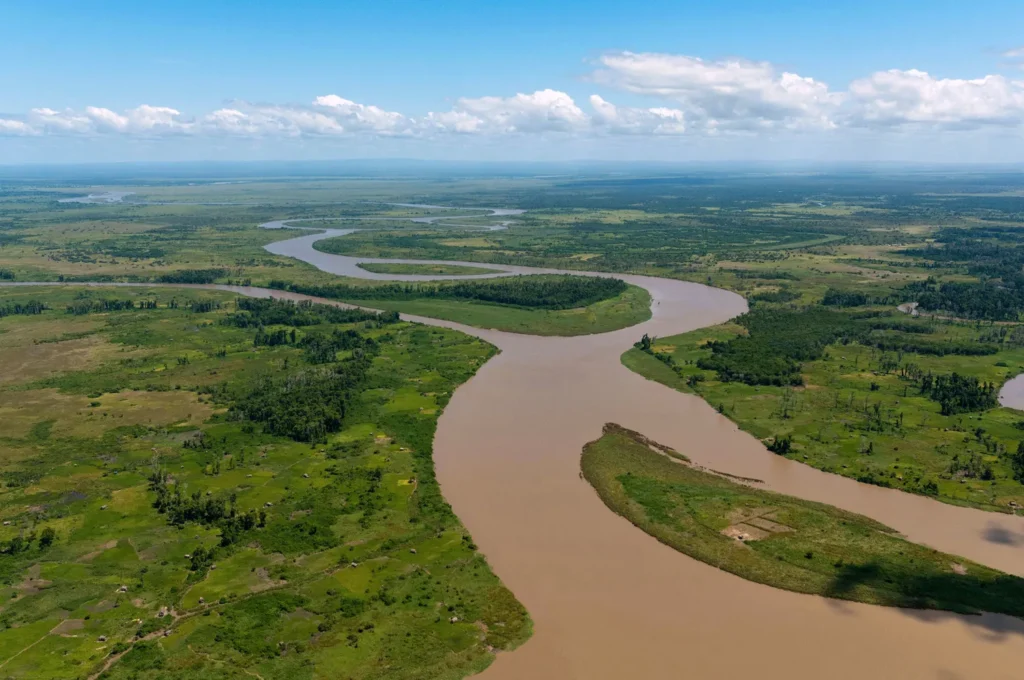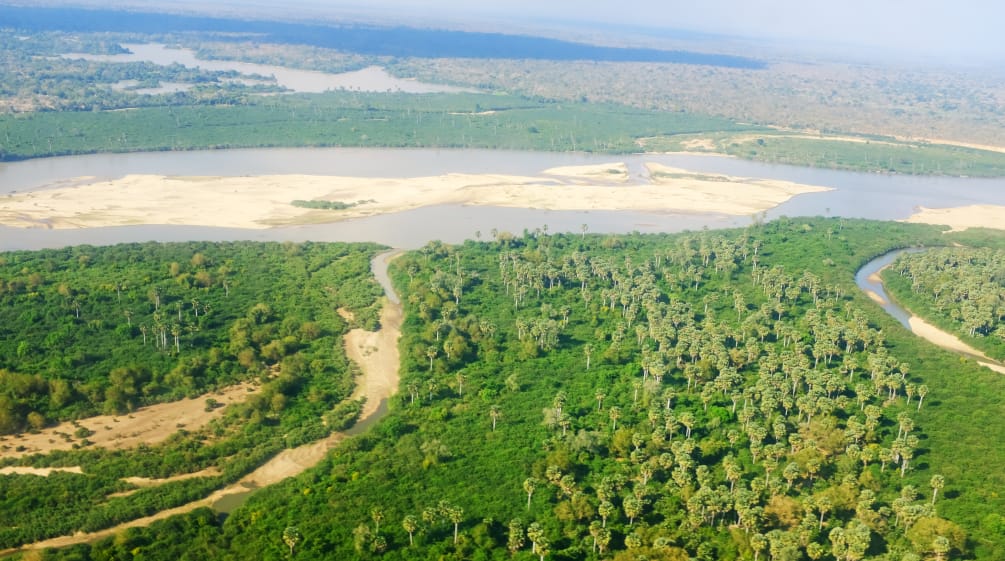Rufiji River Tanzania
The Rufiji River in Tanzania, renowned for its diverse flora and wildlife, is the largest river in the country. The origin is at the Shuguli Falls, where the Luwegu and Kilombero (Ulanga) rivers merge to create the Rufiji River. The river flows northeast through the Selous Game Reserve before merging with the Ruaha River and entering Stieglers Gorge, the river’s second segment. The river begins in southwestern Tanzania and traverses approximately 600 kilometers (370 miles) before discharging into the Indian Ocean. The Great Ruaha River is one of its primary tributaries. It may be traversed for around 100 kilometres (62 miles).

The Rufiji River traverses the Selous Game Reserve, one of Africa’s rare unblemished wilderness regions, sustaining some of the continent’s most significant animal populations. For an extended period, the parks and reserves in Southern Tanzania have been regarded as the “junior counterpart” to the illustrious northern wildlife areas and prominent tourist safari locales, such as Kilimanjaro, Ngorongoro, and Serengeti.
The impressive Selous Wildlife Reserve is nourished by the Rufiji River in Tanzania. The Rufiji river basin, including approximately 180,000 square kilometers, is the largest river basin in Tanzania.
Numerous species are attracted to the Selous Game Reserve by the Rufiji River. Consequently, it has exerted a considerable influence on human prosperity throughout history.
The navigable Rufiji Delta houses the largest mangrove forests globally.
A plethora of water sports and activities is accessible on the river.
Rufiji is home to large animals, frogs, and remarkable African reptiles. Enormous crocodiles, hippopotamuses, and remarkable frogs inhabit this region. An additional motivation to explore the region is its avifauna. Remarkable avian species, such as kingfishers, African spoonbills, Black-winged stilts, hammerkops, and heron ducks, can be located there.
Things to around the Rufiji River.
Boat safaris.
Consider embarking on an extraordinary sail across the Rufiji Delta rather than a traditional wildlife drive. Rufiji is among Tanzania’s premier safari experiences. The aquatic environment significantly enriches your experience at the Selous Game Reserve, a premier wildlife location, with remarkable observations of hippos, crocodiles, and diverse waterfowl.

Game Excursions.
Embark on a day excursion along the illustrious Rufiji River to observe animals. Game drives are usually performed in open vehicles equipped with a sunroof to ensure unobstructed visibility for all passengers. The guides at Rufiji, trained locally, possess extensive knowledge of the Selous region.
Walking Safaris .
A walking safari at Rufiji River will reveal the subtle details often ignored during wildlife drives. The spores, footprints, and the “little five,” representing the kingdom of insects and reptiles, are intriguing when examined and discussed by your walking guide.
Discovering marine life.
The Rufiji River Delta’s diverse fish species facilitate exploration and study of its marine life. Invertebrates, including mollusks, crabs, copepods, prawns, jellyfish, and leeches, are also plentiful.
Best time for visiting the Rufiji River.
The dry season, occurring from late June to October, is the optimal period for exploring the Rufiji River Delta. This illustrates a direct relationship between the necessity for animals to congregate around enduring rivers, prompted by the increasing scarcity of water over the protracted dry season, and other parks that flourish in arid conditions.
Furthermore, as the drought intensifies, the vegetation progressively diminishes, enhancing animal visibility. Join us to get premier experiences in Tanzania and along the Rufiji River.
Directions to the Rufiji River
One way is to travel from Dar es Salaam to Mikumi National Park, traversing the Matambwe gate (now referred to as Nyerere National Park), entering the Selous Game Reserve, and ultimately reaching the Rufiji River. This represents a standard circular route. The journey from Dar es Salaam to Selous, a distance of 218 km, may need up to 4 hours.
Here is an alternative route to access the Rufiji River. A multitude of flights originate from Dar es Salaam, Arusha, and Zanzibar, arriving at airstrips in Ruaha or the Selous Game Reserve.
Entry into the country is permitted by Julius Nyerere International Airport (DAR), Kilimanjaro International Airport, and Zanzibar International Airport.
